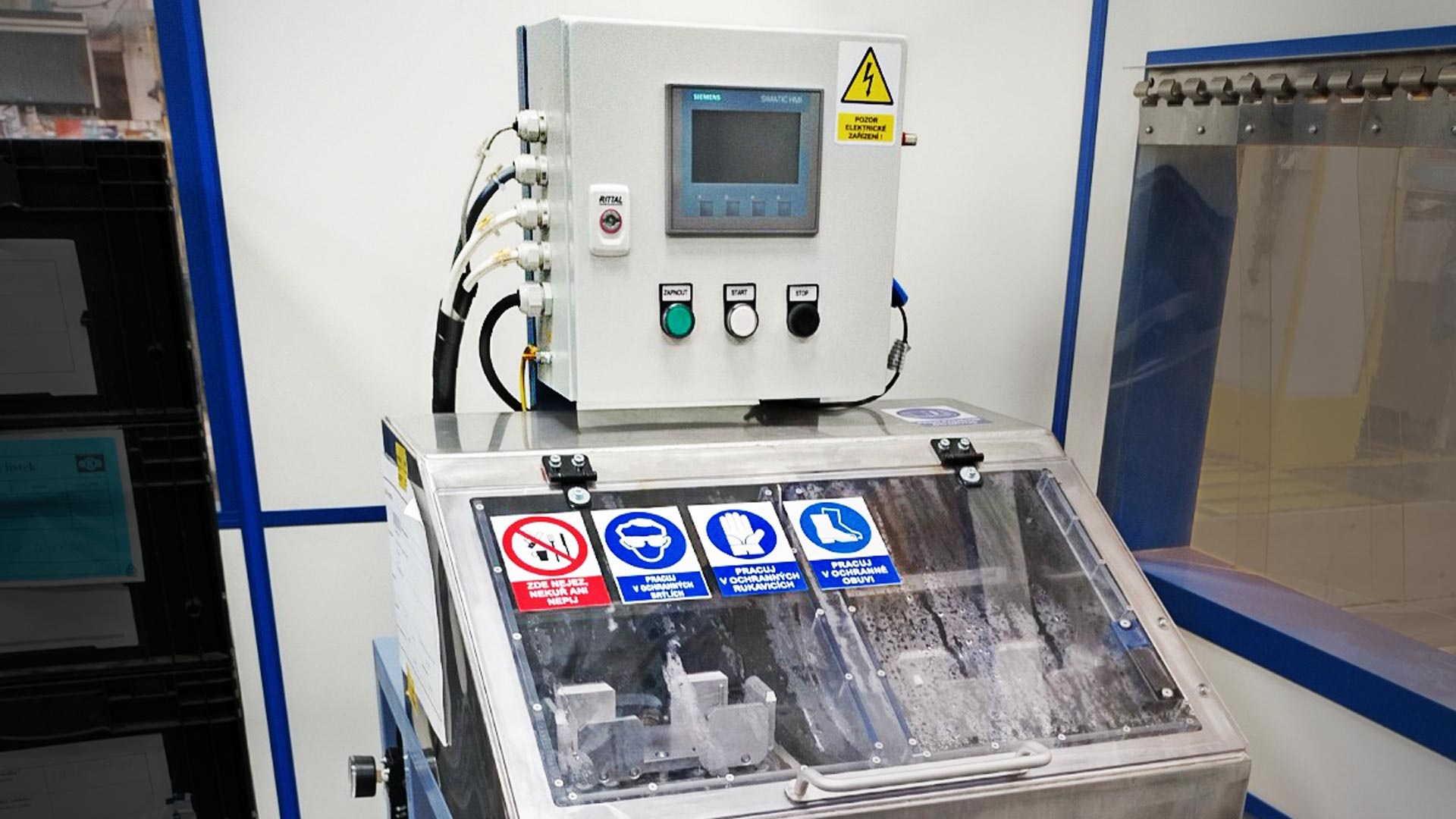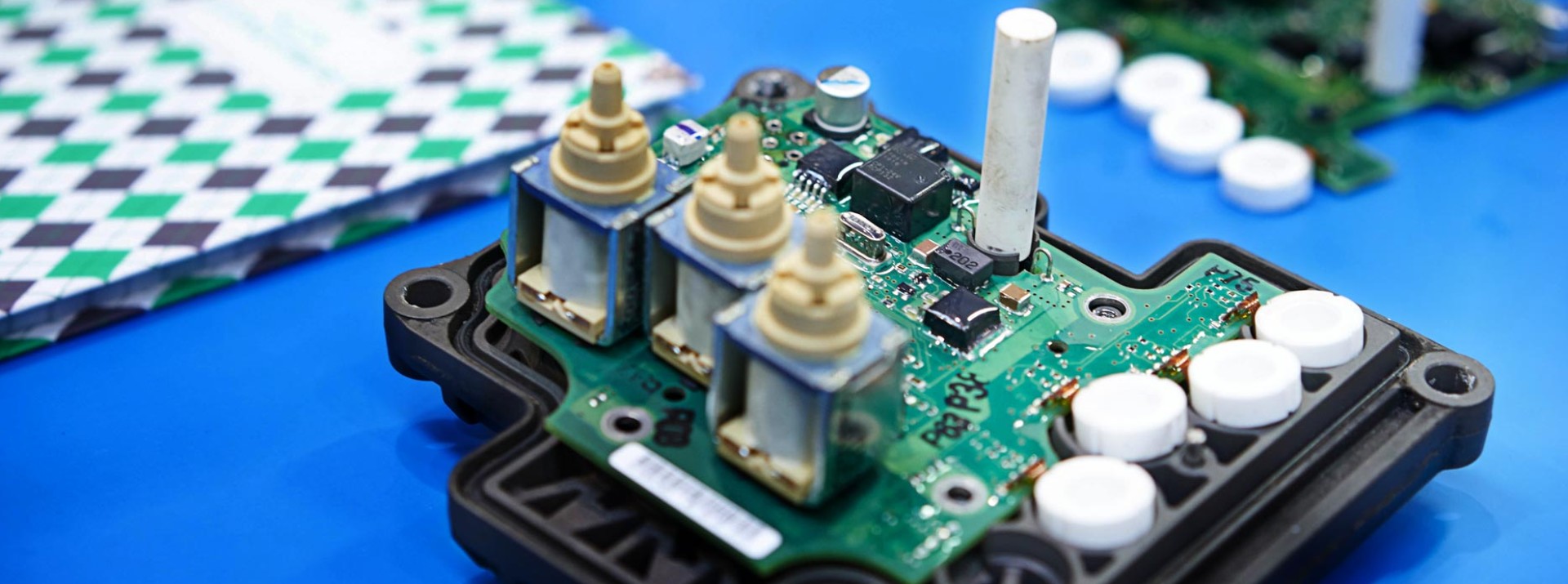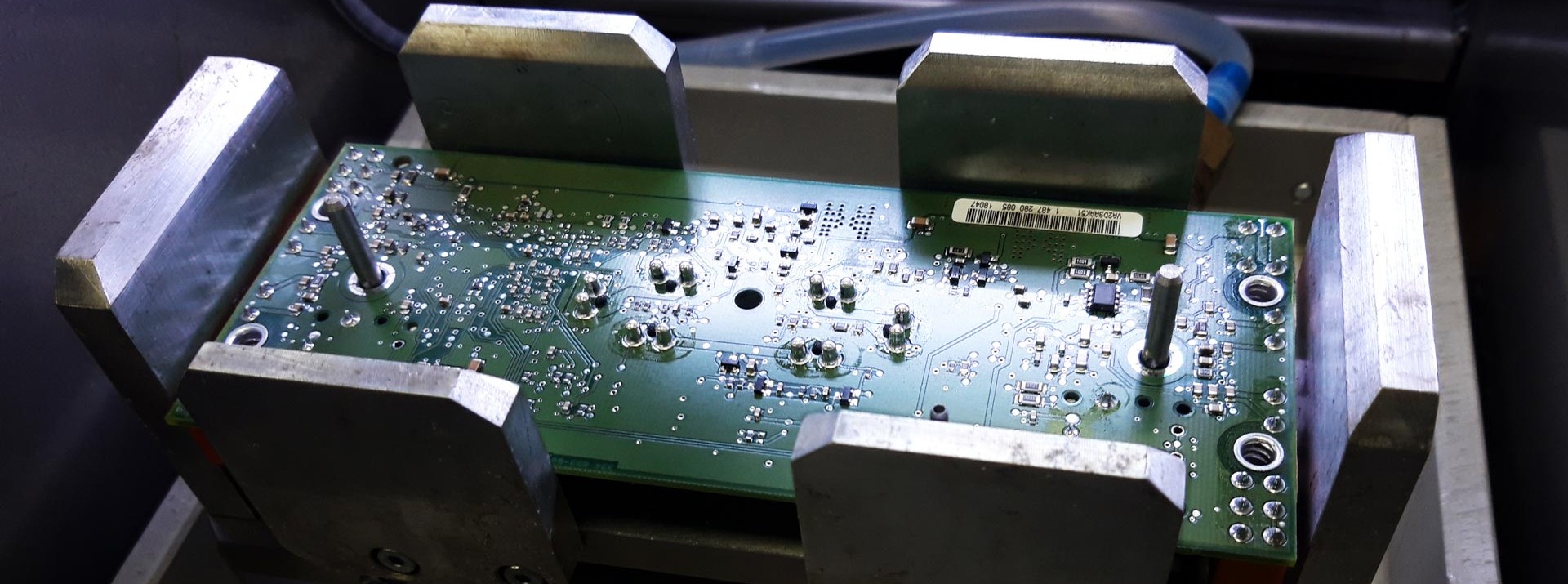Sustainably remanufacturing electronics – Making remanufacturing even greener.
Working with Fraunhofer institutes, Knorr-Bremse has developed an environmentally friendly cleaning process for electronic components that significantly reduces the scrap rate in the industrial remanufacturing of control units – making the whole process even more sustainable.
The industrial remanufacturing of used truck parts is a pretty tough job on the whole. Caked-on dirt, rust film and oil residues from hundreds of thousands of kilometers on the road have to be removed. Rough treatment is dealt out to brake calipers, compressor cylinder heads and crankcases, clutch actuators and the like. Industrial washing systems operating at high temperatures, sometimes even wire brushes and impact wrenches work on the used components until they can only be distinguished from new parts for original equipment by their distinct marking. Then they are ready for use as EconX® parts, helping to get trucks, trailers or buses back on the road again.
“This is all highly unsuitable for our electronic components,” says Marcus Hecht, Team Lead Project Management Remanufacturing & Resale at Knorr-Bremse TruckServices. Inside the sturdy, dust-proof casings that make the various control units fit for use in such a rugged daily operating environment lie soft, sensitive cores: electronic components such as microchips or pressure sensors, soldered onto printed circuit boards. “If just one of the many solder joints breaks or one of the components is damaged by a static discharge, the entire unit becomes unusable,” says Hecht. Contact with corrosive cleaning fluids and ultrasonic cleaning are to be avoided at all costs. A largely dust-free, anti-static working environment is therefore standard when working with the circuit boards. “At the same time, the control units are among the most valuable components in the entire braking system,” says Hecht.

If just one of the many solder joints breaks during the remanufacturing process or one of the components is damaged by a static discharge, the entire unit becomes unusable.
Marcus Hecht – Team Lead Project Management Remanufacturing & Resale at Knorr-Bremse TruckServices
Critical point: the pressure sensor
Aside from software updates, which have to be performed regularly, the control units are extremely low-maintenance and robust. They are able to withstand the usual vehicle vibrations and even major temperature fluctuations.
The pressure sensor is especially crucial to everyday operation. Hecht: “The sensors are part of the compressed air circuit in the truck.” There, they determine the pressure applied to each brake and pass the values on to the electronic systems. “Although the quality of the compressed air is closely managed and the filter cartridge takes out the worst impurities, the compressed air is not clinically clean,” says Hecht. “Tiny dust particles, water and oil droplets are brought in with the compressed air and can settle on the pinhead-sized sensor cell over time. Dirt can also be introduced during coupling and uncoupling or during maintenance in the workshop.” Hecht and his team were therefore faced with the challenge of gently yet effectively cleaning the pressure sensors when disassembling the control units – without damaging the rest of the unit.
Project with Fraunhofer institutes and Bavarian Research Foundation
Knorr-Bremse brought the topic of pressure sensors into the ASPIRE research project that the IGCV (Institute for Casting, Composite and Processing Technology) and IPA (Institute for Manufacturing Engineering and Automation IPA) Fraunhofer institutes were conducting with partners from industry and funding from the Bavarian Research Foundation. The aim of ASPIRE is to close gaps in remanufacturing process chains, thereby increasing overall regeneration rates and further reducing CO2 emissions and material consumption.
The research project involved comparing a variety of cleaning agents and processes. It led to the creation of a pilot system that, according to Hecht, “not only rinses, but also reliably removes water residues. Due to the risk of frost, water residues can be just as damaging as any actual contamination of the tiny sensor cell.”

Series-ready cleaning
The series-ready system has been in operation at Knorr-Bremse's remanufacturing plant in Liberec, Czech Republic, since November 2021. Rinsing with the biodegradable cleaning agent, which dissolves dirt particles and oil film from the sensor at lukewarm temperatures, takes just a few seconds. A narrow cannula is inserted into the so-called chimney of the sensor to precisely apply the cleaning agent to the sensor cell. The rest of the circuit board remains untouched. Next, the cleaning agent is rinsed off with water and the sensor is dried using compressed air, also via the cannula. This residue-free rinsing and drying is absolutely crucial to the quality of the whole process. And that’s it – done and dusted. Remanufacturing expert Hecht adds: “With this system, we are very likely to reduce the scrap rate in our pressor sensor remanufacturing to below one percent. That is an exceptional figure and good news in terms of sustainability – not to mention the relief it brings during the current shortage of newly produced microchips.”

